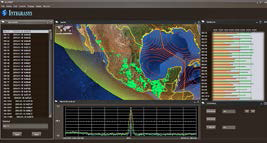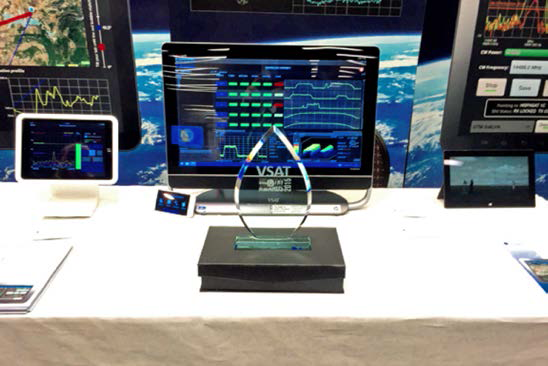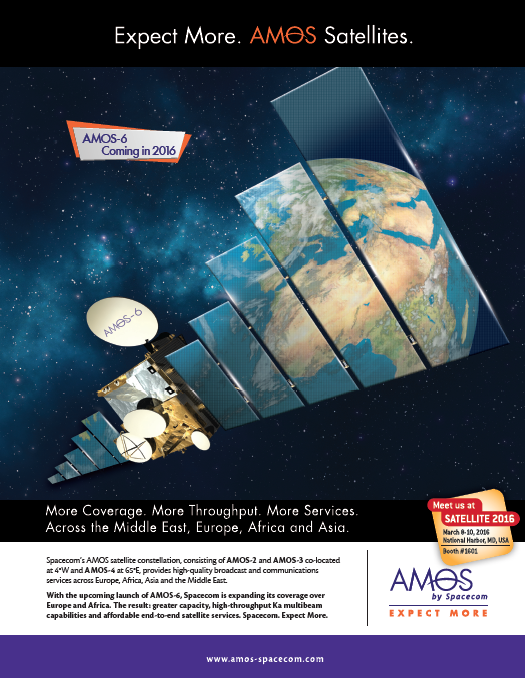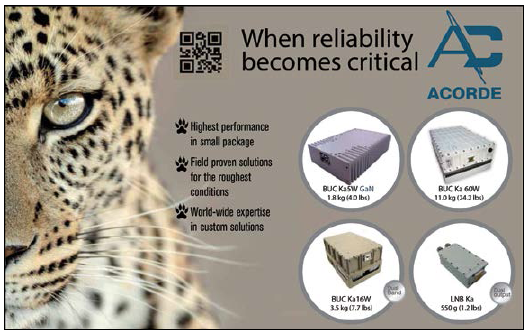The Very Small Aperture Terminal (VSAT) market is clearly high volume and provides crucially needed communications to remote areas for a whole range of different services, such as oil & gas, maritime, environmental monitoring, e-learning, disaster recovery and cellular backhaul, to name but a few segments.

High Throughput Satellite (HTS) is making those terminals all the more efficient and, consequently, in even higher demand. That rapid growth means that operators are having to install more and more networks to cope with all of the extra demand. Add to that the fact that VSAT networks already come with their own set of challenges, and you have a new set of challenges that were already unique.
Complex Networks
Maintaining VSAT networks is extremely complex. By its very nature, terminals are often located in remote environments and operate where satellite is the only possible communications connection. In most cases, VSAT networks are also unmanned and left to operate automatically for years—even when they are not operating correctly, many times those on site aren’t trained in actually operating the satellite equipment.
These facts bring to the forefront a variety of concerns. First, at installation, the installer often needs to travel long distances and then spend a considerable amount of time carrying out the VSAT installation. Also, if any mistakes are made at this stage, which is often the case, even more time is required for someone to return to the site and correct those errors while the VSAT keeps operating with poor performance, degrading the overall service and causing interference.
Of course, the complexity of VSAT networks is not limited to installation. Errors can easily occur during operation, either due to human error from onsite personnel or other factors that are beyond the operator’s control, such as atmospheric conditions. This problem can also lead to
satellite interference.
In a world where VSAT networks can be huge, if one single VSAT is mispointed or saturated, that can have an impact on the entire service performance, especially on adaptive power adjustment and HTS networks.
Correcting Errors
Currently, when those errors are detected, which is usually once interference has occurred, someone must travel to the site and analyze and correct the error.
As with installation, this can require a substantial amount of time and resources, from traveling to the site and then with the additional time necessary to correct the error.
An added complication is that many VSAT networks are also mobile. Take maritime, for example, or the military, where the unit is constantly on the move. In those cases, the VSAT may have been perfectly installed and pointed; however, every time relocation occurs, those same misalign problems can occur, once again.
Often the personnel accompanying the unit won’t be highly trained in satellite communications, but even when they are, there is a constant job of realignment to ensure the equipment is always optimally operating and without satellite interference.

In most cases, for someone to spend vast amount of time dealing with the equipment while in the field, especially in a military situation, is simply not practical. Yet, at the same time, ensuring a continuous connection can often be crucial to a mission’s effectiveness.
Smarter Tools
The best and most efficient way to manage the complexity of VSAT networks is through the application of smarter tools. At Integrasys, the company launched the Satmotion Pocket tool some time ago.
Satmotion Pocket ensures fast, accurate, and efficient installation of VSAT networks and has proven to be an invaluable tool for many networks, greatly reducing installation time and errors for customers by easing the installation process.
The VSAT industry now needs to get smarter after installation to ensure the network continues to operate accurately and without degrading performance or causing interference. Integrasys found that most Network Management Systems assume that satellite terminals are reachable and therefore aim to optimize network performance or detect terminal malfunctions based on satellite feedback.

Integrasys’ Alusat screenshot.
However, errors at the premises, such as antenna de-pointing or signal level variations, usually result in a VSAT connectivity break. Once again, this requires a technician to re-visit the site to resolve the problem.
Integrasys was approached by the VSAT industry to develop a tool to enable the use of Satmotion Pocket technology at the Network Operation Center (NOC). That result is Alusat, which maximizes the overall network performance and minimizes the maintenance time, effort, and interference by automating the checks and corrections from the NOC.
Alusat
Alusat (Always Up Satellite Terminal) is an automated tool that combines traditional equipment management with spectrum monitoring and measurement in a new way to accurately derive the remote terminal RF status. In certain conditions, Alusat can also recover out-of-service or service-degraded terminals.
Alusat is deployed at the NOC site and automatically checks the uplink and downlink health of the VSAT population at radio level, also collecting relevant configuration and performance information.
The operator determines the different thresholds for Rx and Tx and actions that are to be taken automatically by the system in different circumstances. Alusat then checks out all of the terminals in the target community to detect failures, raise any necessary alarms and perform any pre-determined actions when needed, as well as using the Rx and Tx measured values of copolar power, crosspolar isolation, adjacent satellite interference and 1dB compression point.

The Technology Innovation of the Year Award at the 2015 VSAT Global Series Industry Awards was received by Integrasys.
This technology is critically important for networks with adaptive power adjustment capability, as this tool is able to automatically calibrate the saturation point in the overall network from the NOC.
Alusat is an evolution of the company’s existing Satmotion Pocket tool and coexists, sharing the same hardware, allowing the hub operator to evaluate the overall network performances with a single click, just in case anything has happened to change the status following accurate installation through the use of Satmotion Pocket remote commissioning.
Making Life Easier
In a world where VSAT networks are becoming more prevalent and complex, making life easier for the VSAT network operators is extremely important. In an ideal world, all staff would be trained to the highest standards, but even then, maintenance tasks are quite time consuming.
The more automated the processes and error detection, the more efficient those networks can be and the fewer errors and interference will be experiences. This, then, makes life better for the entire industry and more profitable for service providers who benefit from these VSAT
tool automations.
integrasys-space.com/



